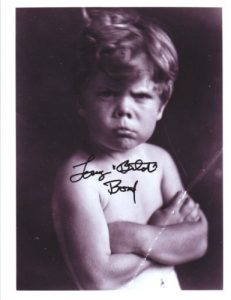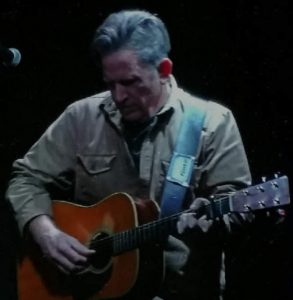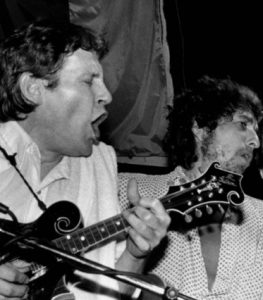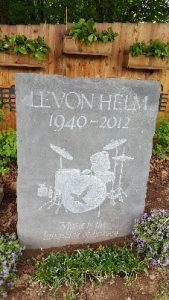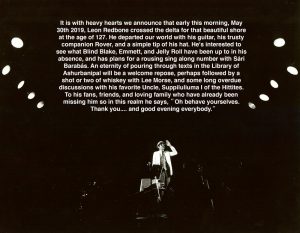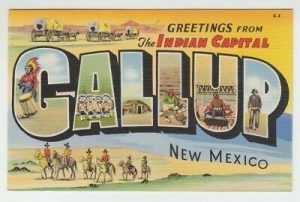By Aaron Galbraith and Filip Łobodziński
When is a Dylan credit not a Dylan credit? As Sherlock Holmes once said, “There is nothing more deceptive than an obvious fact”.
If you have done any research into the subject of Dylan’s songwriting credits, as those of us who live in Untold Dylan Land are want to do in our spare time, you would notice some anomalies popping up from time to time. We’ve made it our job to explain these mysteries so you don’t end up buying some expensive and rare CD thinking you had found some previously unknown Dylan original when you haven’t.
As an example, take the case of this credit Dylan received on the Sue Foley album Secret Weapon. Here is a screen shot from the reverse of the CD inlay:
As far as we know Dylan has never written a song titled “If You Think I’ve Lost You”. Now for this one, we didn’t have to open a file at Scotland Yard to see that this was a simple case of someone mistakenly copying the credits from the track above which is a cover of Dylan’s “Positively Fourth Street”. The proofreader should be fired! Tony would have spotted this mistake that’s for sure. [I certainly wouldn’t put money on that! – Tony]
Or how about this one, “I Ain’t Gonna Pin My Hopes On That” which is credited to Bob Dylan/Joachim Trastell. You can listen to it here.
It might take a bit of time to figure out the reason for the Dylan credit. It incorporates two lines from “Last Thoughts On Woody Guthrie”. The title also refers to the number of mentions of “hope” throughout Dylan’s poem. Special Rider music is given as the publisher but lists Trastell first and Dylan second.
This leads us to our latest research and a track called “Kiedy Wieje Wiatr” by the Polish group Wolna Grupa Bukowina On their album “Sad” which is credited to Bob Dylan/W. Bellon.
Now, our Polish is non existent, however, Google Translate tells us that the title means “When The Wind Blows”.
The song starts at 2.50 on this video
We could not work out for the life of me why Dylan gets a credit here, we assumed it was a translation of “Blowing In The Wind” but the music doesn’t sound like it and the lyrics are of no help either.
This is what google translate gives us – first the Polish
Kiedy Pada deszcz i lśni wokół nas
Trawa podnosi źdźbła i zieleni się liść
Kiedy pada deszcz, kiedy pada deszcz
Gdzie podział się tamten deszcz
Pada inny deszcz, pada już od lat
Lecz trawy nie ma i nie ma już drzew
A ten, który stał patrząc jak tęcza lśni
Nie zobaczy już nic, nie zapyta
Gdzie podział się tamten deszcz
Kiedy wieje wiatr niebem wstrząsa dreszcz
Liście tańczą w takt pieśni starej jak świat
Kiedy wieje wiatr, Kiedy wieje wiatr
Gdzie podział się tamten wiatr
Wieje inny wiatr, wieje już od lat
Lecz trawy nie ma i nie ma już drzew
A ten, który stał patrząc jak ziemia drży
Nie zobaczy już nic, nie zapyta
Gdzie podział się tamten wiatr
And the English
When it rains and shines around us The grass picks up the leaves and the leaf turns green When it rains, when it rains Where did that rain go? It's raining, it's been raining for years But the grass is gone and there are no more trees And the one who stood watching the rainbow shine He won't see anything anymore, he won't ask Where did that rain go? When the wind blows the sky shivers The leaves dance to a song as old as the world When the wind blows, When the wind blows Where is that wind? Another wind is blowing, it has been blowing for years But the grass is gone and there are no more trees And the one who stood watching the earth tremble He won't see anything anymore, he won't ask Where is that wind?
So, it was at this point we decided to reach out to our Polish friend Filip Łobodziński who helped us so wonderfully with the Jacek Kaczmarski article.
Filip did his usual top notch work and provided the following research:
—-
Dylan’s authorship is attributed absolutely mistakenly. The song is Malvina Reynolds’s “What Have They Done to the Rain?” (originally titled “Rain Song”) and the only Dylan connection I can find is that Joan Baez sang it on her second live album “Joan Baez in Concert, Part 2” (1963). Which is not necessarily equal to Bob Dylan being its writer. actually he did not write it nor did he sing it as far as I know.
The song has been covered by the Searchers and Marianne Faithfull, among others.
For the performance:
Wolna Grupa Bukowina (Bukovina Free Group) was a band or, rather, a free conglomerate of artists who loved folk music in the American vein but deeply rooted in Carpathian entourage and mythology. Hippy-infused lyrics about liberty, free wandering, mountains and s.o. Jack London was one of their heroes.
Wojciech Belon (he stylized his last name as Bellon) and a couple of his friends were the core of the WGB but there were many other singers and players associated with them.
Bellon died in 1985 aged only 33, due to alcoholic problems and kidney’s disease.
The band was started by Bellon in high school when he invited her school mate Grażyna Kulawik to sing with him – she sings lead on the song in question. The album was recorded nearly a decade after Bellon’s death.
—-
So, all credit to Filip for his fine research into this one and we can all close our wallets back up safe in the knowledge that we were not, after all missing an unknown Dylan original in our collections. Unless you really liked the song for its own sake of course!
Untold Dylan: who we are what we do
Untold Dylan is written by people who want to write for Untold Dylan. It is simply a forum for those interested in the work of the most famous, influential and recognised popular musician and poet of our era, to read about, listen to and express their thoughts on, his lyrics and music.
We welcome articles, contributions and ideas from all our readers. Sadly no one gets paid, but if you are published here, your work will be read by a fairly large number of people across the world, ranging from fans to academics who teach English literature. If you have an idea, or a finished piece send it as a Word file to Tony@schools.co.uk with a note saying that it is for publication on Untold Dylan.
We also have a very lively discussion group “Untold Dylan” on Facebook with approaching 5000 active members. Just type the phrase “Untold Dylan” in, on your Facebook page or follow this link
You’ll find some notes about our latest posts arranged by themes and subjects on the home page of this site. You can also see details of our main sections on this site at the top of this page under the picture. Not every index is complete but I do my best.
But what is complete is our index to all the 604 Dylan compositions and co-compositions that we have found, on the A to Z page. I’m proud of that; no one else has that many songs with that much information. Elsewhere the songs are indexed by theme and by the date of composition. See for example Bob Dylan year by year.
And please do note our friends at The Bob Dylan Project, which also lists every Dylan song in alphabetical order, and has links to licensed recordings and performances by Dylan and by other artists, plus links back to our reviews (which we do appreciate).
If in reading the site and listening to some of the music you get even one tenth as much pleasure as I get in publishing the material, you’ll be having a good time.
Tony Attwood, Publisher / editor, Untold Dylan.


